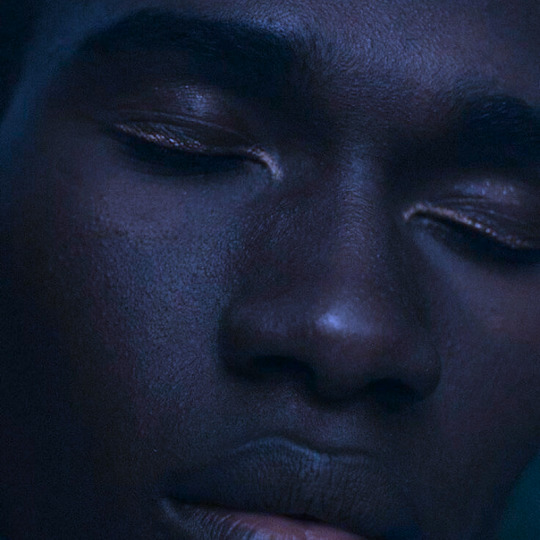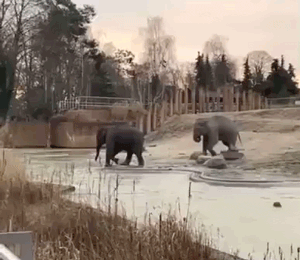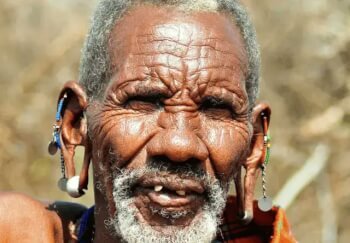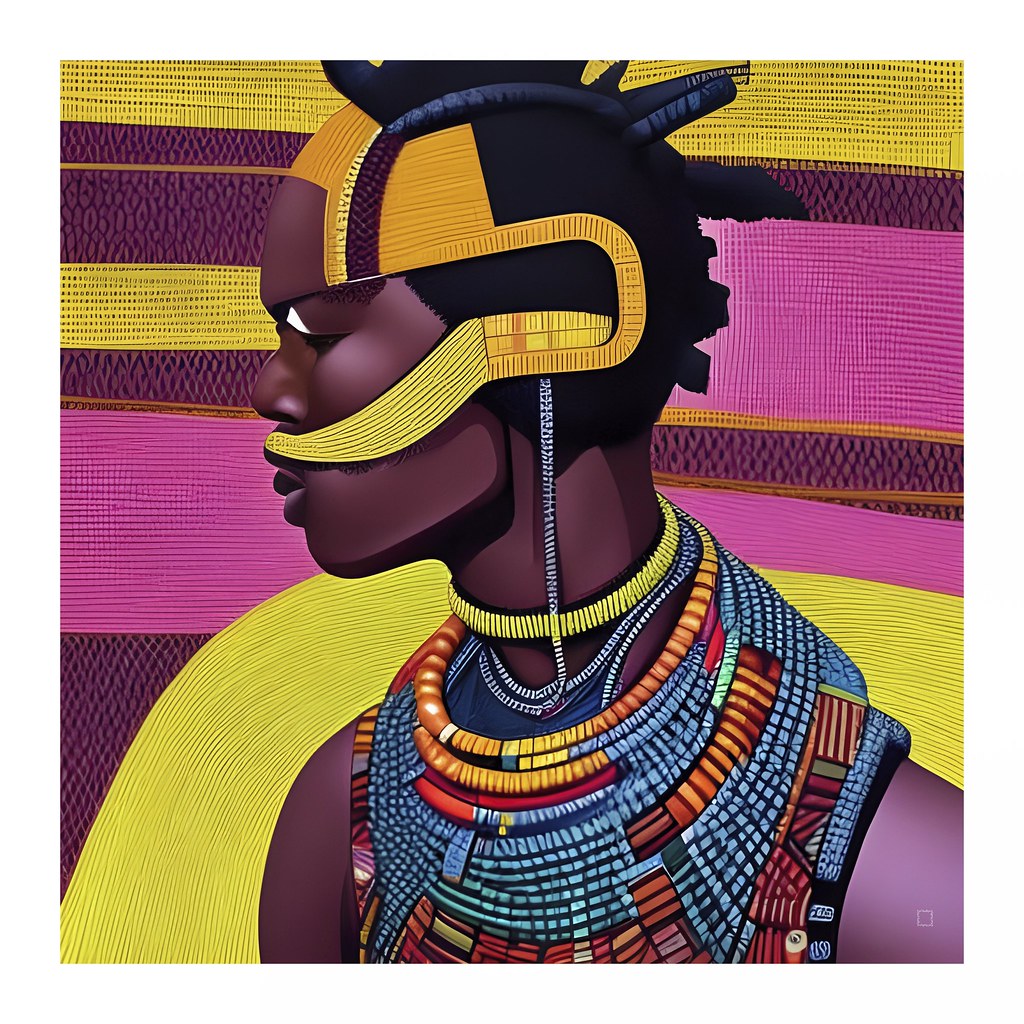#kalenjin
Video
youtube
The 5 Most Fascinating Tribes in East Africa You Should Know About
#youtube#african tribes#africa#east africa#maasai#fascinating tribes in africa#chagga#luhya#kalenjin#african culture
1 note
·
View note
Text
3 weird burial rituals the Kalenjin community perform
They would also slaughter only a young bull that would be feasted during the burial day.
In every communities, funerals are conducted in different ceremonies depending on their cultures belief and ritual. In some, the funerals are a somber affair while in others a stylistic celebration of the dead is done.
In Kenya, the kalenjin follow very strict rules and regulations before they bury the dead. The Kalenjin’s would perform different rituals depending on how the late passed…

View On WordPress
0 notes
Text









kalenjin mythology: ilat
ilat is associated with thunder and rain and is said to inhabit deep pools and waterfalls and that the rainbow are his discarded garments. among the nandi, ilet ne-mie and ilet ne-ya respectively are good and a bad thunder-gods. the crashing of thunder near at hand is said to be ilet ne-ya trying to come to earth to kill people while the distant rumbling of thunder is ilet ne-mie protecting man by driving away his name-sake. forked lightning is the sword of ilet ne-ya while sheet lightning is said to be the sword of ilet ne-mie.
131 notes
·
View notes
Text


AHMOSE NEFERTARI (Grandmother of Hatshepsut)
Ahmose Nefertari x Miss South Sudan
Ahmose-Nefertari was the first Great Royal Wife of the 18th Dynasty of Ancient Egypt…
She was a daughter of Seqenenre Tao and Ahhotep I, and royal sister and wife to Ahmose I…
Her son Amenhotep I became pharaoh and she may have served as his regent when he was young…
“The Tarifian, Badarian and Tasian cultures of Middle and Upper Egypt have strong ties with the Nubian/Nilotic pastoral tradition, as can be inferred, for instance, by the very similar pottery, economy and settlement pattern and by the latest findings in the deserts surrounding the Egyptian Nile valley” (Gatto 2011b, 2012a, b, 2013)
SOURCE;
(Prehistory and Protohistory of Ancient Civilizations; 2015)
In other words, Predynastic Ancient Egyptians (4500 B.C.— 3100 B.C.) are more closely related to Nubian / Nilotic peoples…
The Nilotic peoples are people indigenous to the Nile Valley who speak Nilotic languages…
They inhabit South Sudan, Sudan, Egypt, Ethiopia, Uganda, Kenya, the Democratic Republic of the Congo, Rwanda, Burundi and Tanzania…
Among these are the Burun-speaking peoples, Karo peoples, Luo peoples, Ateker peoples, Kalenjin peoples, Datooga, Dinka, Nuer, Atwot, Lotuko, and the Maa-speaking peoples…
Nubians / Nilotic peoples are the ORIGINAL inhabitants of ancient Kemet…
These are the ORIGINAL founders…
22 notes
·
View notes
Text
kalenjin

8 notes
·
View notes
Text
Monster Spotlight: Chemosit

CR 4
Neutral Large Magical Beast
Adventure Path: Serpent's Skull: Racing to Ruin, pg. 86-87
No no, not Chemnosit, Chemosit! No extra N! Completely different animals. A Google search tells me that 'chemosit' means 'devil' in the language of the Kalenjin people (take this information with a grain of salt, as its source is cryptozoologists, not linguists), whose legends give us this horrid beast in the first place (also known as the Nandi Bear on Earth). 'Devil' isn't an entirely accurate descriptor of these carnivorous beasts, which operate out of hunger rather than evil, but for the unfortunates who live near their territory, there is no other word that could describe them.
The boogeymen of the Mwangi Expanse, endless tales of these creatures' evil are used to scare misbehaving children into shape and prevent them from running too far from the safety of civilization. They're demonized as spirits of wrath, the malevolent night incarnate, or even literal demons in the shape of animals, and violent shamans and druids will sometimes bind the beasts to their wills to commit terrible acts upon the caster's enemies. If a clan of Chemosit is found, the creatures are often pushed back as far as the local warriors can manage, if they're not slain outright out of sheer fear... But don't let any of this make you think that they're gentle, misunderstood beasts I'm trying to make you sympathize with. They're animalistic predators, like sharks or crocodiles or lions, and hold no true malice or sinister fiendish power, but they're incredibly violent, territorial, and ferocious animals that should never be approached. Their territory should be completely avoided if at all possible, and in any encounter with one lethal force should be used to deter them (if not slay them outright if they're too close to a civilization), because like many carnivores on Golarion, they have a dangerous appetite for human flesh... Or, rather, human brains. But we'll get to THAT in a minute!
It is, unfortunately for everyone, difficult to know when you've entered Chemosit territory. These predators have only 2 Int, but possess uncannily sharp instincts which grant them a dangerous cunning; they scrub away their own tracks with their thick tails, bury their dung, and hide the remains of their former meals in caves or other natural pits. They're nocturnal ambush hunters, their myriad senses (mainly darkvision and scent) allowing them to easily move through the darkness with a +15 to Stealth; come daylight, no one but the most canny observer may realize anything is wrong as the beasts erase the most obvious traces of their presence. The only really reliable way to know they're around is when you hear their Terrifying Roar, a low, groaning noise that carries for miles that the creatures use to communicate to the rest of their clan... but because it's so damn loud and carries so damn far, it's not a reliable means of tracking them, just a means knowing that they're out there.
Chemosit rest and socialize with one another among the branches of any massive trees capable of handling their weight, their ponderous size belying a shocking speed of 40ft and a 40ft climb speed, so anyone hoping to clamber to safety from what they may believe is an exotic bear won't live to reconsider their mistake. Their penchant for living among high branches also gives them the potential to launch a vertical assault, literally dropping down on top of unwary prey and laying into them with their Full-Attack if the belly-flop from a 700+ pound animal doesn't kill them instantly. As expected, Chemosit have Claw-Claw-Bite, the former 1d6+7 and the latter 1d8+7. Given that they're all high-accuracy natural attacks, the beasts can freely add Power Attack without losing too much; a +9 to their attack rolls still lets them hit targets in medium armor a good portion of the time, and that extra +4 damage to each attack makes being hit by all three blows instant death for most creatures Chemosit typically hunt.
When able, Chemosit prefer to take prey in its sleep, adding to their frightening presence as boogeymen that steal children from beds. That Stealth lets them get awfully close before most creatures realize they're around, and once in position, the ape-bears coup de grace their slumbering quarry. They're also prone to coup de gracing creatures who've been made helpless one way or another, typically after being beaten unconscious, stopping their attack on other creatures and even tanking the resulting AoOs to do so in melee. This is because if they manage to kill a creature with a coup de grace, they immediately crack open the skull and consume the brain (or brain-equivalent). Chemosit LOVE the taste of brains above any other flesh, so much so that these Brain Eaters gain supernatural nutrition and vigor from doing so, regaining HP in chunks depending on the Hit Dice of their victim, and there's multiple different effects for different creature types! A regular old Humanoid brain restores 1d4 HP x the victim's HD, but a Monstrous Humanoid does the same AND grants the ape-bear the benefits of Rage for at least 5 minutes. Any creature capable of casting Arcane spells heals the beasts AND grants them SR 15, while any creature using Divine spells raises the healing from 1d4/HD to 1d8/HD! Amusingly, eating the brain of an Outsider (even a Native one) restores the beast's HP but also confuses it for 1d4 rounds... and eating the rotten brain of an Undead restores no HP, instead dealing 1d4 points of damage to the creature and sickening it for 1d4 rounds. Losing a party member is bad enough, but having the creature that killed them then immediately benefit from their death is just an extra kick in the teeth!
To round off this article, we'll finish with that damn blood-chilling howling. When a sneak attack isn't an option and their stealth fails, Chemosit disable bands of their foes with their Terrifying Roar, which causes 1d4 rounds of the shaken condition in all creatures within 300ft that fail a DC 15 Will save (unless the creature has recently eaten an animal's brain, which raises it to DC 17)... and worse still, signals to other Chemosit in the area that there's food. Best to finish the fight quick and evacuate before the rest show up, unless that's exactly what you want! Note: That's never what you want.
You can read more about them here.
18 notes
·
View notes
Note
oh my your Lovix is beautiful 💖 What have you planned for the 3 pairs of wings ?
Ok so I’ve thought a lot about these guys and they were super difficult for a while because I just,, wasn’t sure really lol
BUT! I have eventually decided I am going to stick with the theme that because Believix in my thing is a result of magical fae from all over Earth collaborating together, the wings are going to be that too instead of being from different subsets of magic.
Disclaimer for ideas here: I have talked to a few people I know who are Aborignal ( which is such a large blanket I know but I have spoken to a few who go by that term and specifically one indigenous person of the Torres Island Strait Islands) as well as a very kind person whom I don’t personally know who is Aboriginal and just wanted to share their thoughts, but I am simply a white person from the US and if I am told by other indigenous peoples belonging to these groups that they think this isn’t ok, LET ME KNOW. I’m doing my best and do what I can to educate myself but that doesn’t mean I’m not gonna fuck up.
SO, for Tracix, the peoples that will later be called the Aboriginal Peoples of Australia made these. I’m basing this off the fact that they have such a rich oral history with so much information and accuracy, with stories leading all the way back to the Pleistocene era even. This knowledge and way of recounting history with such specific details allowed them to craft an ability they gave physical form to in the way of wings that allowed for others to access this ability and if they already have an ability similar to this, it gives them a huge boost too.
Speedix was made by The Kalenjin peoples of Kenya. They’re some of the best runners on Earth, and they wanted to find a way to allow others to appreciate their own abilities thanks to their culture and lifestyle. The best they could do for others who don’t live the way they do is give them a speed boost since something like changing a beings entire physiology to match the adaptions they have as a result of their very active lifestyle didn’t seem like a great idea to them lol
And Zoomix was made by the Irish people. This is based off the fact that I’m Scots-Irish with most of that being of Irish ancestry from my birth dad and I think that the continued resilience of appreciation for “old Paganism” despite the Brit’s best attempts to destroy any traces of it is good and badass lol. More detailed too since I know more about this history too and am less scared of fucking up by totally misrepresenting something and/or saying something completely ignorant.
Basically my idea is that The Picts started experimenting with runes and symbols as a way to try and bolster new abilities, and the Irish continued to build on that after the Picts were gone. These attempts can be seen in the carvings of rock and man made set ups utilizing the land. Eventually they were able to specialize a form of magic that allowed for teleportation as a result of this work, concentrating this magic on the items, making it flow and swirl through the reliefs and the carvings or bounce between the markers they’ve set up. This is a bit heavier and more difficult to manage than the abilities of the other 2 wings as it involves physically moving a whole being with one’s own abilities and the aid of outside sources i.e. the symbols and physical aids. The best way they could find to remedy this in a way that allowed for everyone to have a chance to use it was to inscribe the same swirls, symbols, and patterns into the wings themselves. It takes a lot more magic and concentration to use this ability too than the others. Part of why this magic operates so differently from the other 2 is also because things like runes and symbols are typically utilized more by witches than fae, and it was a bit of a collaborative effort between the two groups to try and find a way to do this, so it utilizes what could be classified as dark magic practices (drawing from the magic and energy of the surroundings of a being) to transition into a more light magic based ability (calling upon the power of one’s individual magical core to finish the task)
Also peep me drawing from some Ancient Aliens style bullshit here with the “these old markings surely are sign of an Alien Transporter and this big circle of rocks marked the landing pad for their flying machine” but with magical beings
YEAH THOUGH! I’ll make a post eventually with the designs of the wings now that I have an actual background laid out for them:)
#winx club#winx#asks#lore#worldbuilding#winx club rewrite#winx club redo#winx club reboot#believix#transformations
9 notes
·
View notes
Text
Kalenjin people from Ngong, Kenya are the fastest runners.
25 grams of fiber a day.
32 grams of protein
0 notes
Video
youtube
Why some Kalenjin politicians are now fleeing UDA. Shocking | Kenya news
0 notes
Text
The rich history and culture of the Kalenjin tribe
The Kalenjin are an ethnic group that is primarily inhabiting the Rift Valley part of Kenya. The Kalenjin tribe are known for their athletic prowess, having produced many successful long-distance runners, including Olympic champions like Eliud Kipchoge and David Rudisha. The Tribe consist of several sub-tribes, each with its own distinct culture and language. They have a rich history and have…

View On WordPress
0 notes
Text

Every Kenyan is now literally against President Ruto...even his own Kalenjin community. The deaths in the hands of police and general carnage witnessed today in Kenya is evident enough. It's time Ruto RESIGNS.
0 notes
Video
youtube
Kalenjin Customary Wedding - Nolan weds Brenda
1 note
·
View note
Video
AfriKhA - Maasai by Karl Rudhyn (2023)
With the music : Maasai warriors Song - Traditional dance and breathing rhythmic vocals.
youtu.be/cWRTfQ4B0CU
Maasai are a Nilotic ethnic group inhabiting northern, central and southern Kenya and northern Tanzania.
The Maasai inhabit the African Great Lakes region and arrived via South Sudan. Most Nilotic speakers in the area, including the Maasai, the Turkana and the Kalenjin, are pastoralists and are famous for their fearsome reputations as warriors and cattle rustlers.
The monotheistic Maasai worship a single deity called Enkai, Nkai or Engai. Engai has a dual nature, represented by two colours: Engai Narok (Black God) is benevolent, and Engai Na-nyokie (Red God) is vengeful.
The Maasai also have a totemic animal, which is the lion; however, the animal can be killed. The way the Maasai kill the lion differs from trophy hunting as it is used in the rite of passage ceremony.
Many Maasai have also adopted Christianity or Islam. The Maasai are known for their distinctive customs and dress but also for their intricate jewellery for decades, and have sold these items to tourists as a business.
AfriKhA - A new creative Series by Karl Rudhyn during this 2023 About Africa, its Tribes, Nature, Culture And Colors.
(via AfriKhA - Maasai | AfriKhA - Maasai by Karl Rudhyn (2023) Wi… | Flickr)
0 notes
Text

The Japanese, French, British, and Americans have sent runners to train in Iten. “Everybody runs here,” an athlete said.Illustration by Cristiana Couciero; Source photographs from Getty
Why Were Two Female Running Champions Killed in Kenya 🇰🇪?
Iten, a small town in the Great Rift Valley, Elgeyo-Marakwet County, Republic of Kenya became the long-distance-running capital of the world. Then, within a span of six months, two élite athletes were found dead.
— By Alexis Okeowo | April 10, 2023
When Agnes Tirop was eleven, she was already as fast as athletes twice her age. “She loved running, and she shined,” her brother Martin told me. Tirop, who was born in 1995, was small-boned and delicate-featured, with cropped hair. Even as a child, she was self-possessed, with a singular focus on improving her speed. She grew up in the Kenyan village of Nandi, in the Great Rift Valley, a four-thousand-mile-long volcanic trench of steep escarpments, green hills, and soda lakes that is visible from space. She came from a big family. Her father, Vincent, had been a long-distance runner in his youth—as had her grandfather—but Vincent found it difficult to earn a living from the sport. Instead, each day he bought milk from local farmers and took it by bicycle to sell at the market in the city of Eldoret, twenty-nine miles away. The family waited, sometimes until midnight, for him to bring home food for them to eat. Despite having little money, Vincent saved five litres of milk every week for his children, so that they would have the nutrition they needed in order to train. “We were dirt poor,” Martin said. “We started running because of poverty.”
Several of the children showed an early aptitude for the sport, but it was clear that Tirop was special. She began training in primary school, running barefoot on the roads in her village. Joan Chelimo, who trained with Tirop, said that she always wanted to put on bouncy Kalenjin music before practice. “She was very young, and she was beating senior athletes,” Chelimo said. At fifteen, Tirop won the five-thousand-metre race at a national junior competition. Later that year, she flew to South Africa for an international junior race, and came in second. When she returned home, her family threw her a party, serving meat and rice and playing music for hours. “It was her first time out of the country, and we felt very happy and proud,” Vincent said. Tirop soon started giving some of her winnings to her family, so that they could build a house. “She paid for my school fees—and I’m older than her!” Martin said.
The Great Rift Valley in Kenya—and particularly a small town called Iten, two hours from Nandi—has become, by some measures, the running capital of the world. Iten, like many villages in the area, sits in the mountains, almost eight thousand feet above sea level, but you can descend four thousand feet into the valley by car within half an hour. Athletes there can “live high and train low,” spending their non-training days at altitude so that their lungs become more efficient but running at a lower elevation, where the air is more oxygen-rich. Kenya has won more élite marathons than any other country in the past twenty years, and many of its winners have come from the Great Rift Valley. After Ibrahim Hussein, who was from Iten, became the first African to win the New York City Marathon, in 1987, the town’s reputation was cemented. A sign above the main road welcomes visitors to the “home of champions.” Kenya’s best athletes now train in the area, including the world’s most decorated living marathoner, Eliud Kipchoge. The Japanese, French, British, and Americans have sent runners to train there. “Iten is the nerve center,” Vincent Onywera, who teaches exercise and sports science at Kenya College of Accountancy University, in Nairobi, told me.
When Tirop was in secondary school, she met a man named Ibrahim Rotich, who was about fifteen years older. Rotich was a big, charming man, and he offered to manage and coach Tirop. Tirop already had a coach, and Rotich seemed, to Tirop’s family, to have little formal experience, but Tirop accepted his offer. Tirop’s sisters later observed Rotich driving her around, acting like her coach. Rotich stated recently that he “invested heavily” in preparing Tirop to “be the champion she was by supporting her athletics career and being by her side during training as her assistant and footing her medical bills.” Daisy Jepkemei, Tirop’s childhood best friend, told me that she was impressed by Rotich’s dedication: “He was encouraging.” In 2014, Tirop won the African Cross Country Championship, in Uganda. The next year, she won the World Athletics Cross Country Championships, in China—the youngest winner of that race in thirty years. “I had no fear,” she said, at the time. “I was just trying to run my own race.”
Tirop soon dropped out of school. Her parents protested, suspecting that Rotich was to blame. Tirop loved studying languages, especially Kiswahili. “She was almost finished with secondary school,” Martin told me. The family complained to local authorities that she had left school without their permission, but Rotich and Tirop fled town, eventually moving to Iten. Nahashon Kibon, Tirop’s first coach, warned her about becoming romantically involved with Rotich; this upset Tirop, and she and Kibon went their separate ways. “She was not happy with me,” he said. She began running at a training camp in Iten. In 2016, she and Rotich married in secret, according to court documents. Rotich discouraged her from talking to her parents. Martha Akello, another runner, who lived next door to the couple in Iten, was disturbed by Rotich’s controlling behavior. She told me that the couple shared a phone. “We were neighbors, but he did not permit her to mingle with the other ladies,” she said. “He had to accompany her to training. It’s like she was living in prison.”
In mid-2017, Tirop told Akello that she was pregnant. She seemed happy, and asked Akello for advice on how to balance motherhood with her running career. That fall, Akello learned that she was also pregnant. She was eager to share the news with Tirop, but when they met, Akello recalled, Tirop told her, “Unfortunately, I’m not pregnant anymore.” According to Akello, Tirop said that she had wanted to keep the baby, but that Rotich, who depended on her earnings for his income, had forced her to get an abortion. (Tirop’s other friends and family said that they had no knowledge of her pregnancy.) She told Akello that she regretted agreeing to the procedure and wished that Akello had been around when it happened. (A lawyer representing Rotich did not respond to repeated requests for comment; he hung up on me when I reached him by phone, and then blocked me.)
Tirop’s friends and family began to worry that she was falling into a pattern that was disturbingly common among female runners in Iten. “The husbands expect them to bring home money,” Njeri Migwi, the executive director of Usikimye, an advocacy group that focusses on gender-based violence, told me. “The minute they want certain levels of independence, the men abuse them.” Around 2018, Tirop reconnected with her family. She had Martin work as her pacemaker. Rotich was always around. “I didn’t have any power to separate them,” Martin said.
One morning last October, I went to visit Brother Colm O’Connell, a missionary and a track coach from Ireland who has lived for five decades in a cottage at a Catholic school in Iten. O’Connell, who is portly, with white sideburns, first came to Kenya in 1976, to teach geography, but ended up coaching track at the school full time. Eventually, he started training athletes hoping to run professionally, and he has become one of the most celebrated coaches in the region. O’Connell occasionally trains foreign athletes, but he focusses primarily on local runners. He had coached David Rudisha, a two-time Olympic gold medallist and two-time world champion. It had rained the night before I visited, and the air was cool and wet. A small group of runners were gathering near O’Connell’s home, stretching and jogging in place. “Have you guys got water, or are you O.K.?” O’Connell shouted. No one wanted water. He told me, “I don’t want them complaining down in the valley.”
Every morning in Iten, in the early hours, I saw people running: Kenyans and foreigners, men and women, with children not far behind. Some wore sneakers; others ran in sandals. “Everybody runs here,” Viola Cheptoo, an Olympic distance runner, told me. One of the people training with O’Connell was from the United Kingdom. “He decided to jump in the deep end,” O’Connell said. Another was a Kenyan American who ran for the University of Alabama. One of O’Connell’s female runners also served in the military and had just been called back to her barracks. Several of the athletes had represented Kenya in major international competitions. The runners headed down the road, and O’Connell and I followed in his pickup truck. We drove past a market in a grassy field, then dipped into the valley, which is a mile deep and filled with golden fields of ripening maize.
Running is Kenya’s most well-known pastime. Some of this national affinity might have biological roots. People in the Kalenjin ethnic group, and particularly those in the Nandi subgroup, who live in the Great Rift Valley, have developed—likely as a result of centuries at high elevation—deeper-than-average lung capacities, bigger and more numerous red blood cells (which transport oxygen to muscles), and lower body masses. Onywera told me that he has found similar traits in Ethiopian communities that also live in the Rift Valley. Many Kenyans consume a milk-rich diet, which is helpful in childhood development. “They also have psychological readiness—the mental belief that they are the best,” Onywera said. The Kalenjin have a long tradition of competing in running, wrestling, and tug-of-war. In the nineteen-twenties, British missionaries encouraged Kalenjin men to join colonial running competitions as a way of distracting them from cattle raiding, political unrest, and potential rebellion. “They wanted to get them to focus on athletics,” Lorna Kimaiyo, a former runner who is now writing a dissertation on the history of Kenyan female runners, told me. The King’s African Rifles, a brutal colonial regiment that put down the Mau Mau rebellion, recruited Kalenjin men to compete in its athletic competitions.
Kenya won its first Olympic medal in track in 1964, the year after it gained independence from Britain. At that time, there was no official running league in Kenya; the telecommunications agency, the post office, the rail and port authorities, and the national airline operated leagues for their employees. Early talents came out of the military. (The Kenya Defense Forces still allows soldiers to take leave in order to race.) In the seventies, American universities began recruiting Kenyan runners, expanding access to formal training. Kenya won four Olympic gold medals in Seoul in 1988; three of the medallists were attending college in the United States. Shoe companies and talent agencies began offering sponsorships and contracts, making the sport more lucrative. Running was soon seen as the best way out of poverty in Kenya.
Young Kenyans who showed promise started coming to Iten to find coaches who would train them. “You have nothing else to do except run,” Joan Jepkorir, an athlete from Iten, told me. Rudisha, who holds the world record in the eight-hundred-metre, moved to Iten in high school. He told me, “Even the girls were better than me.” Training centers and guesthouses—many started by former champions—sprang up. “All of us were farmers, and all of a sudden we have people coming in with really huge amounts of money, winning races, getting millions,” Jepkorir said. In a reversal of colonial dynamics, about half the British national team now trains at the High-Altitude Training Center, a vast complex started by a Kalenjin Olympian. Programs are competitive. O’Connell told me, “Out of almost fifty in our youth group, only about ten are really going to make it to the top and make a living out of the sport.” Some choose to run for other countries instead. Some might take up other endurance sports, like cycling; in 1998, Kenya sent a skier, who first trained as a runner, to the Winter Olympics.
At first, only men ran competitively. But in 1984 the first Olympic women’s marathon was held in Los Angeles. “Kenyan women started to dominate in the nineties, when they were being recruited by American universities,” Kimaiyo said. Tegla Loroupe, a woman from the Great Rift Valley, won the New York marathon in 1994. But, when Kenyan women began to bring home significant prize money, they got a mixed reception. “They were not being celebrated in the Kalenjin community because of our patriarchal culture,” Kimaiyo said. Some men resented their wives’ independence. As O’Connell put it, “The lady is the breadwinner, the lady is the one who is known.” Still, young women began coming to Iten in the hope of finding success. “Most of the athletes in Kenya, they finish their education possibly at the primary or high-school level, and they have nothing, so they say, ‘I want to run,’ ” Jepkorir told me. “You pack your bags. You come to Iten. Your parents maybe give you just a hundred dollars to start your life. But you come to realize it’s not enough. . . . You say, ‘Shit, I’m broke. What do I do?’ That is when the predators come.”
In September, 2021, Tirop and a group of Kenyan runners travelled to the thousand-year-old German village of Herzogenaurach, in the Bavarian countryside. Herzogenaurach was the home town of the Dassler brothers, who, after a feud, founded the rival sneaker companies Adidas and Puma. Tirop was there to compete in the Adizero: Road to Records, organized by Adidas. By this time, she was one of the most successful runners in Kenya. In August, Tirop had competed in the five-thousand-metre race, at the Olympics in Tokyo, and taken fourth place. In Herzogenaurach, she competed in the ten-thousand-metre and finished in an astonishing thirty minutes and one second. She had broken the world record. At the end, Tirop—covered in sweat and wrapped in a huge Kenyan flag—said, “I’m so happy.”
Before the trip, Tirop had asked Martin to meet her and their sister Eve on the road between Eldoret and Iten. Tirop told her siblings that she wanted to leave Rotich. She said that he had been spending her money at bars while she was away, and that she was tired of it. He had become convinced that Tirop was having an affair, perhaps with a childhood friend who was now an Olympian. (The friend denied that this was so, but said that Rotich had grown paranoid about his relationship with Tirop, and was harassing him.) Soon Rotich arrived in a rage, with two police officers. Rotich claimed that Tirop had stolen the car, and the family went to the police station to settle the matter. The officers realized who Tirop was, Martin said, and let her go. But, before they left, he recalled, a female officer warned her to be “very careful,” because Rotich seemed dangerous.
Tirop went to stay with her parents. She told her siblings that Rotich had hit her. She told Martin that he had threatened to burn the house down if she left him. She had told others about Rotich’s behavior, too. In 2021, she told Milcah Chemos, an athletes’ representative from Athletics Kenya, which oversees the sport in the country, that Rotich had abused her. Chemos told me that she spoke to Tirop and Rotich. “She talked about the abuse, but at first she told me, ‘Let me finish my competition first,’ ” Chemos said. “I told him not to do anything and wait for her to finish her competition. Then we would talk.” Chemos seemed focussed on reconciling the couple, and on making sure that Tirop’s training was not interrupted. Chemos insisted that she “didn’t know the story fully,” and that Tirop hadn’t seemed ready to leave Rotich at the time. But Cheptoo, the Olympic distance runner, told me, “Every single time victims go to Athletics Kenya, they tell them to go sort out your own things in private, don’t put your business out there.” (A co-opted member of Athletics Kenya’s executive committee said that he wasn’t aware of Tirop’s story, but contested the idea that the organization turns a blind eye to such reports. He said that Athletics Kenya is now investigating issues of abuse involving its athletes. When The New Yorker reached out to further clarify the organization’s position, it did not respond.)
Before her trip to Herzogenaurach, Tirop went back to Iten to resume her training. She moved into a guesthouse at the training camp. “The first thing was to secure her,” Joseph Cheromei, who managed the camp, told me. “There was a competition coming up.” Cheromei said that he often saw his female runners being exploited by their partners. “I see it every day now,” he said. “The athletes win a race, the man needs to own the earnings, the woman refuses, and the problem arises. It affects the ladies’ performance.” He tried to help keep the peace: “I go and reconcile them.” In October, after the race in Germany, Rotich came to the camp, and Tirop agreed to go back home with him. Eve went with them, and spent the night in their spare room.
The next day, Rotich told Eve that he and Tirop were going to Nairobi for a competition. Eve had no choice but to leave. Later that day, though, she couldn’t reach Tirop. Rotich picked up the phone and told Eve that she was not around. The next morning, Tirop was found stabbed and beaten to death in her home. Rotich had fled, leaving a note, reportedly confessing to the crime and saying that the relationship had been “full of fights.” Police have said that they found a knife and a club at the scene. Rotich later admitted in an affidavit to killing Tirop, but pleaded not guilty to her murder, claiming that he was provoked into killing her because he believed she was having an affair with her childhood friend: “My late wife received a call which she put on speakerphone and had a very demeaning conversation about me with her lover which took me to the edge.” (The childhood friend denied that this call took place, saying that he stopped speaking with Tirop because of Rotich’s harassment.) After the killing, Rotich claimed that he “temporarily lost my mind and I kept driving aimlessly until I got [to] Mombasa.” He was arrested the day after Tirop’s body was found. According to Tirop’s family and their lawyer, Rotich was listed as the owner of several of the couple’s properties. (The lawyer would not make the deeds public because they have not yet been introduced in court.) Tirop’s funeral was held on October 23rd, and was attended by more than a thousand people, including prominent athletes and Kenyan politicians. It would have been her twenty-sixth birthday.
Last fall, I visited the home that Tirop had shared with Rotich, a gray brick house with mauve trim and lime-green doors. A shed outside held her exercise equipment. “Her shoes are still here,” Martin, who now lives there, told me. I went to her training camp. Cheromei was welcoming a group of Italian athletes; he has learned several European languages in order to work with the flood of international runners. Afterward, he took me on a tour, with Tirop’s friend and fellow-runner Mary Keitany. Tirop’s room at the camp was quiet, with a single bed under mosquito netting. “In America, when you have a boyfriend he can kill you or no?” she asked. I told her that there were laws that try to prevent this, but that domestic violence was still one of the leading causes of women being killed in the United States. “Like here in Kenya?” Keitany asked, surprised.
Tirop’s abuse seemed to be an open secret. But Tirop’s friends said that, by the time she competed in the Olympics, they had started to see a difference in her. She was wearing acrylic nails and red lipstick and plaiting her hair. She seemed to be gathering the confidence to finally leave Rotich. Ten days before her body was found, Tirop placed second at a race in Switzerland. Afterward, she had tea with some of the other athletes in Geneva. She asked Jepkorir why it was so much easier to divorce in Europe, and Jepkorir said that it was because women had more independence. “Then she said, ‘I wish divorcing was easier in Kenya,’ ” Jepkorir told me. “I should have said something then.”
When I arrived in Iten, I met up with several of Tirop’s friends, most of whom were current runners. The women greeted one another happily, and asked after Chelimo’s sister, who was pregnant. “When are we going to have your baby shower?” Chelimo teased Jepkorir. Keitany was travelling to New York the following week to be honored for winning the New York marathon four times. The talk turned to Tirop. “She had a good spirit,” Keitany said. After Tirop’s death, her friends had started a WhatsApp group to express their pain, and to discuss what they could do to prevent further violence. Eventually, they formed an organization called Tirop’s Angels, which aims to raise awareness about gender-based violence in Iten, and to offer resources for fighting it. “We want to see a change in this country, especially in our own communities,” Cheptoo told me.
One in three women in Kenya has experienced gender-based violence, according to a survey released this year by the Kenya National Bureau of Statistics. Teen pregnancy and early marriage are common, and when women marry they traditionally have little power in the household; women own less than two per cent of the country’s property in their names alone, the Kenya Land Alliance notes. Domestic violence is seen as a minor offense. “We still have cases of police stations turning away victims,” Sarah Ochwada, a lawyer who handles domestic-violence cases involving athletes, told me in an e-mail. “Because communities view domestic disputes as family issues they try to convince victims to withdraw criminal complaints.”
Many female runners come to Iten in search of an opportunity, and men, often with few real qualifications, offer to coach them. “The trend is that these young girls get into ‘relationships’ with older athletes or trainers who offer them protection against other predators,” Ochwada said. “But over time, it’s those same protectors who begin to abuse them.” When female athletes begin to make money, their male partners control their winnings. Jepkorir, who works for a company that manages athletes, told me that husbands often have control of female runners’ bank accounts. “This is normal to them,” she said. Cheptoo has seen her teammates crying over the issue at races. “They say, ‘My husband is yelling at me for not winning the race, he’s threatening he’ll beat me up when I get home.’ ” When women push back, partners lash out. “I don’t think there’s any woman who goes and asks for her money, and then nothing happens,” Cheptoo said.
Tirop’s Angels holds events at training camps, schools, and churches to raise awareness about domestic violence. The group has helped women leave abusive relationships and find housing. It has connected them with counsellors, provided them with food and clothing, and given them running shoes so that they can continue training. I went with members of Tirop’s Angels to visit a girl they were working with who had fled her home after being abused by her father. They were raising money to pay for her food, medicine, and school fees. She told me, “I’m O.K. now. I’m back in school.”
In October, 2021, the night before Tirop’s death, a twenty-seven-year-old runner named Edith Muthoni, who lived east of Nairobi, was killed; her throat was slit with a machete. In 2014, Lucy Kabuu, another runner, was sued by her ex-husband for control of half of her properties. In the Kenyan newspaper the Daily Nation, Kabuu has argued that although some of the properties are in his name, she bought them all with her winnings; she has also accused him of stealing from her bank accounts and assaulting her. (Kabuu’s ex-husband has denied the allegations, according to the Daily Nation, and argued that he contributed to the acquisition and development of several pieces of land. The case is ongoing.) This past February, the Olympic gold medallist Vivian Cheruiyot told another Kenyan paper, the Standard, that her husband, Moses Kiplagat, had taken control of her properties, including gas stations and farmland, and that, when she objected, he abused her physically and psychologically. (Kiplagat has denied the allegations, the Standard reported, and claimed that Cheruiyot was facing undisclosed social challenges.)
Many of Tirop’s friends also knew another runner, Damaris Mutua, who had a high forehead and a bright smile, and grew up in a town south of Nairobi. “She loved to talk, and she loved gospel music,” her sister Francisca told me. Mutua began running in primary school, and in 2010 she won a bronze medal for Kenya in the thousand-metre race at the Youth Olympics in Singapore. In 2022, Mutua moved to Iten to train. Later that year, she won second place in the Arab Cross Country Championships in Bahrain, and third place at the Luanda half marathon in Angola. When she returned from Luanda, she was in high spirits. Francisca recalled her saying, “I’ll be bringing back gold next time.”
When Mutua moved to Iten, she stayed with Akello, Tirop’s friend, whom she had met at races in Morocco and France. The women hiked, watched movies, and shared clothes like sisters. “We used to plan,” Akello said. “We had good goals—‘One day we need to run in New York, we need to run in Frankfurt, run in London.’ ” Mutua had a husband named Felix Mwendwa Ngila, and they had a son, who was seven. Ngila worked as a security guard in Qatar, and Mutua rarely saw him. But, after a few months of living with Akello, Mutua told her that she was moving out because her husband was coming to visit. “I said, ‘No problem,’ ” Akello told me. “But she lied to me.”
In fact, Mutua wanted to move in with an Ethiopian runner named Eskinder Hailemaryam Folie, with whom she was having an affair. Folie was tall, with a narrow face and short curls. Jepkorir, who knew him as a fellow-runner, told me that he seemed like a “nice guy.” Mutua and Folie had first met in 2021, at a bar, watching the Boston Marathon. Saleh Kiprotich, Folie’s close friend, frequently visited him and Mutua at their home, where Folie cooked Ethiopian food. When Mutua travelled, Folie sometimes took care of her son.
But over time, according to Kiprotich, Folie became worried that Mutua was going to cheat on him. He would monitor her movements and ask Kiprotich to run errands for her so that she wouldn’t have to leave the house. “He was so insecure and jealous,” Kiprotich said. Folie eventually forbade Kiprotich and other male friends to visit the house when he wasn’t there. In April, 2022, Mutua saw her husband during a layover in Qatar, which angered Folie. He told Kiprotich that he had spent money on Mutua for her gear, her training, and her son, but, now that she was winning races, she seemed less interested in him. “Men identify a lady who can run, then do everything for her, expecting that, when the lady becomes a star, he will be the one controlling the money,” Kiprotich told me.
Later in April, Mutua’s body was found on the bed in Folie’s home. She had been strangled. According to the police, Folie confessed to a friend that he had killed her, then went into hiding, likely in Ethiopia. He is wanted for arrest. A week after the killing, Kiprotich said, he and Folie spoke on the phone, and Folie blamed the killing on Mutua’s alleged lover. “I told him, ‘You’re lying,’ ” Kiprotich said. “Then he started saying that the lady had so many boyfriends that she was dating him and dating other guys at the same time. He told me, ‘I’ve spent a lot of money on this girl.’ ” (Folie did not respond to repeated messages from me, and from Kiprotich on my behalf, asking for comment.) Ngila, Mutua’s husband, was devastated. “The act was so inhuman,” he said. Akello was still reeling from Tirop’s death when she learned of Mutua’s. “I should have never let her leave my place,” she said. It was the second murder of an élite female runner in Iten within six months.
Recently, I met with Christine Muyanga and Purity Kalekye Mutui, two of Mutua’s friends, at a runners’ lodge in Iten. “The problem is that, if you compare the athletic careers of women and men, the women have more of a chance to succeed,” Muyanga said. Women tended to take time off to get married or raise children, reducing the number of them who are competitive at any given time. For men who were struggling to distinguish themselves, athletic romantic partners could be a lifeline. “They want that money, and, at the end of the day, even your husband can kill you for it,” Muyanga said. Mutua’s death came just a few months after Tirop’s Angels was formed. Cheptoo told me, “We’d been trying so hard to protect our sisters out there and call for the murders to stop, and it felt like the message was just falling on deaf ears.” At the lodge, Muyanga and Mutui showed me photographs of their children, and said that they did not want them to become runners. “I tell the small athletes, ‘If you have violence in your marriage, you have to sit down and share with your friends,’ ” Mutui told me. “If you stay silent, it can kill you.”
The Saturday before I left Iten, Tirop’s Angels held an event for women in the area at a local primary school. It was sunny but chilly, and the lawn was full of girls and women. Tirop’s Angels put on loud Kalenjin music, and the audience, wrapped in kikoy blankets, got up and danced. The members of Tirop’s Angels passed out brochures explaining the warning signs of domestic violence. A female doctor urged mothers to tell someone if their children were being abused. A few runners spoke about the violence they had experienced in their homes. Then Cheptoo took the microphone. “I think everybody knows what happened to Agnes,” she said. “Most of us know that Agnes was killed by her husband. In our community, domestic fights are common. . . . Isn’t it important for us to be talking with our daughters?”
Kenyan authorities are still searching for Folie. Francisca, Mutua’s sister, told me, “We just want justice to be served.” Rotich is in custody, and recently requested a plea bargain to reduce the charge to manslaughter because, he said, he killed Tirop as a result of an “extreme provocation that left me no other option.” The prosecution has declined his request, and his next hearing is expected this month. Tirop’s family say that they have recovered some of the properties. “We need him to face judgment,” Martin told me.
But the justice system is not often friendly to victims of gender-based violence. I spoke to Andolo Munga, who works on criminal investigations for Iten and the surrounding area. He said that the Tirop and Mutua families had his sympathies, but he contested my use of the term “domestic violence” to describe the cases. He suggested that the motive in Mutua’s killing had been a “domestic misunderstanding.” He asked me if I was married, and how old I was. “You must be having either a man friend or boyfriend?” Munga said. “Do you want to say it is all a bed of roses?” He continued, “In both cases, nobody had reported that she is being mishandled by the boyfriend or the husband. . . . Why had they not even reported it to Athletics Kenya?” I said that Tirop had talked to someone at Athletics Kenya about her abuse, but that, in general, women were often afraid to report violence, for fear that they would not be taken seriously. Munga told me that women had no reason to fear the police. Many, he said, simply preferred not to press charges, or to use “alternative dispute resolution,” a constitutionally enshrined system that allows conflicts to be mediated by local elders rather than by the courts. (A.D.R. is also seen by critics as focussed primarily on reconciling couples, even when partners remain violent.) “We get official reports, you start investigating, then they come and withdraw and say they’re going for A.D.R.,” Munga said.
Njeri Migwi, the advocacy-group director, told me that, as long as gender-based violence was seen as normal, laws criminalizing it meant nothing. “At health centers, where are the posters?” she asked. “Where is the messaging around gender-based violence? Where do we tell people it’s not O.K., and what it is, and how it can look for different people? It needs to be out there at the community level, in schools, in our curriculums.” Tirop’s Angels has been pushing the government to establish safe houses for victims, and response teams that are separate from police departments. They want prosecutors and police officers to receive more training in dealing with women’s claims, and for Athletics Kenya to create more resources for athletes who report abuse. Until then, the burden falls on girls to avoid dangerous situations. The group is urging young female runners to be wary of romantic entanglements with coaches or trainers, and to maintain control of their money once they get married. “You have to pay yourself,” Mary Keitany said. “You have to know your rights.” Migwi told me that she was hopeful about change coming from grassroots work. “Women talk,” she said. “We’re taking charge of our own stories.”
After the Tirop’s Angels event, several women approached Cheptoo for her phone number. “It’s been really good to know that people, especially women, finally trust us,” she said. She watched the crowd talking on the lawn, drinking tea and eating bread. “When we started Tirop’s Angels, it was out of anger, and I needed answers as to why this happened,” she said. “I’m still angry, and I don’t have any answers.” ♦
0 notes
Text
Working on the concept | Research | 01
I first thought of looking at African tribes to try something new and also to know in depth of their history, with events their community faced. After having look at the types of tribes, I decided to go with the Maasai tribe.
They have lived in areas of Tanzania and Kenya for hundreds of years and graze their precious cattle in both countries even today. Originating from ancient lands and simpler times the Maasai can trace themselves back hundreds of years. But the way they live today still reflects both when and where they came from.
Unlike many other tribes in Kenya, the Maasai are semi-nomadic and pastoral: they live by herding cattle and goats. The Maasai have not fared well in modern Africa. Until the European settlers arrived, fierce Maasai tribes occupied the most fertile lands.
According to their oral history, the Maasai originated from the lower Nile valley north of Lake Turkana (Northwest Kenya) and began migrating south around the 15th century. They arrived to a long land mass, stretching from what is now northern Kenya to central Tanzania between the 17th and late 18th century.
The houses, called Enkaji, are built with branch arches covered with several layers of a mixture of soil, urine and cow dung.
The Maasai people (Kenya's most well-known ethnic tribe) speak Maasai, a language closely related to Samburu (or Sampur), the language of the Samburu people of central Kenya, and to Camus spoken south and southeast of Lake Baringo.
They are a member of the Nilo-Sahara family of languages related to the Nuer, Kalenjin and Dinka. The Maasai community are internationally known for their distinctive culture, rituals, 'high jumping dance', custom dress and being courageous warriors.
0 notes
Photo

Kalenjin Mixtape on The Universal Entertainments Center. (at Lavington, Nairobi) https://www.instagram.com/p/ClfmeqNKra7/?igshid=NGJjMDIxMWI=
0 notes
